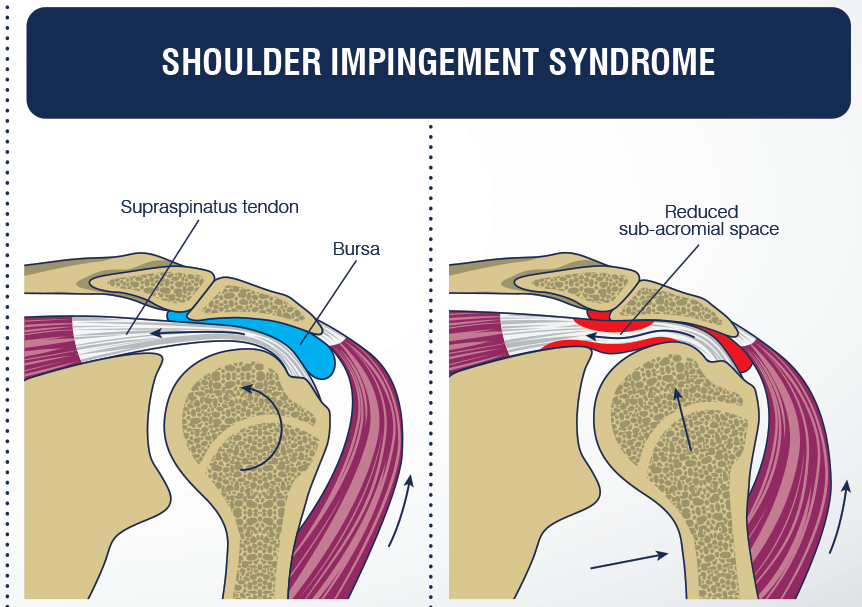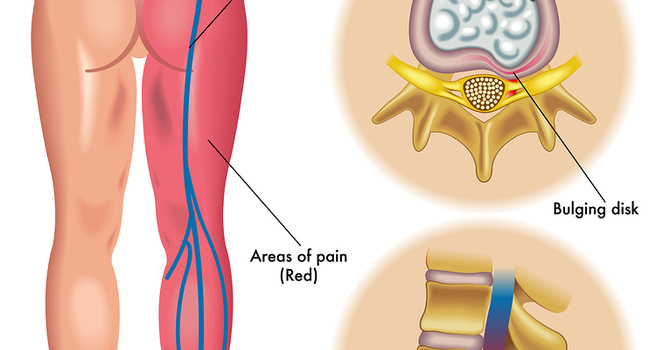What is it? Shoulder impingement syndrome is a common cause of shoulder pain. It occurs when there is impingement of tendons or bursa in the shoulder from bones of the shoulder. Overhead activity of the shoulder, especially repeated activity, is a risk factor for shoulder impingement syndrome. Examples include: painting, lifting, swimming, tennis, and other overhead sports. Other risk factors include bone and joint abnormalities. The most common cause is sleeping with your arm over your head or sitting with bad posture.
With impingement syndrome, pain is persistent and affects everyday activities. Motions such as reaching behind the back or reaching up overhead to put on a coat or blouse, for example, may cause pain.
Over time, impingement syndrome can lead to inflammation of the rotator cuff tendons (tendinitis) and bursa (bursitis). If not treated appropriately, the rotator cuff tendons can start to thin and tear. Symptoms The classic symptom of shoulder impingement is difficulty lifting the arm past shoulder height. It will also hurt to reach the arm behind the back.
People with shoulder impingement usually experience general stiffness and throbbing in the shoulder. This type of pain may resemble that of a toothache, rather than the tearing pain of an injured muscle. The person may also see or feel swelling in their shoulder.
The shoulder will typically ache and be stiff when at rest and then hurt more when the person uses it.
Stretches

Doorway Shoulder Stretch- Stand in a doorway.Hold the side of the door frame with the affected arm, slightly below shoulder height.Turn the upper body away from the arm to feel a slight stretch in the shoulder.Hold for 20 seconds.

Crossover Arm Stretch-Stand straight and lift the affected arm straight out in front of the body, below shoulder height.Using the opposite arm, gently pull the affected arm across the body.Hold the arm here for 5–10 seconds, then relax back to the starting position.Repeat 5 times.





